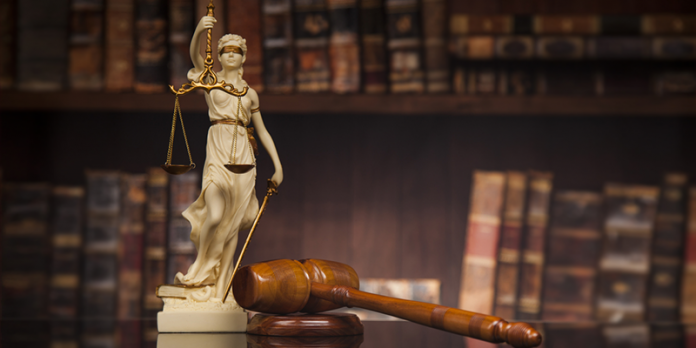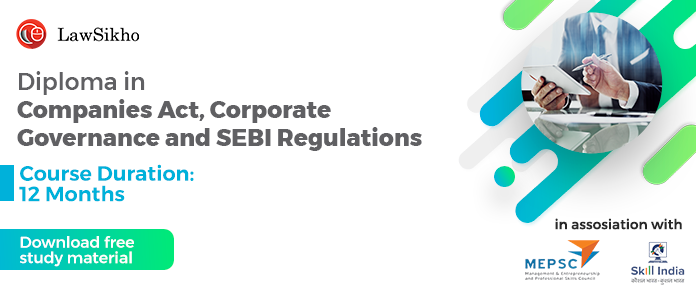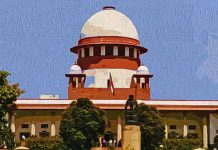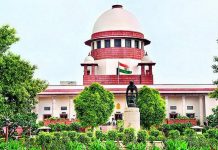This article is authored by Akash Krishnan, a law student from ICFAI Law School, Hyderabad. It discusses in detail the history of custodial deaths globally and the guidelines issued in the case of D.K Basu in this regard.
Table of Contents
Introduction
On 25th May 2020, four American Police officers killed a 46-year-old Black American citizen, George Floyd, while arresting him. This triggered a series of protests and public outrage globally against the police brutality and racism that America, in particular, has been witnessing for many decades. The police officers were held accountable and within a few days, they were charged for second-degree murder and, aiding and abetting the murder. The Minneapolis City Council also took immediate measures and the Congress decided to pass the Police Reform Bill 2021 to restructure police administration, ensure transparency and maintain a national database for police misconduct.
The ripples of this incident were also noted in India via social media when the country came together in solidarity with the Black Lives Matter movement. While the people were posting about the political discourse in America, India witnessed one of its many George Floyd moments in Tamil Nadu when a father-son duo namely Jeyraj, 62 and Bennix 32, were tortured to death in police custody. But unlike America, the police officers were only suspended and some amount of compensation was announced for the deceased’s family.
Both of these incidents have two things in common. The first one is the marginalized background of the victims. George Floyd was a black minority and the father-son duo from Tamil Nadu belonged to a minority Nadar Community. But even regardless of their socio-economical background, the second common thing was the police apprehension and illegal deaths caused by the police personnel while exercising their power and over their official duty.
Custodial deaths are very common in India and states such as Uttar Pradesh, Rajasthan, Tamil Nadu and Bihar, in particular, have had a notorious history of normalized use of third-degree torture methods by the police in custody which in most cases eventually results in custodial deaths. To this effect, the Hon’ble Supreme Court of India has issued a set of guidelines in a PIL registered by Dilip Kumar Basu about the rules and procedures to be followed by the police personnel while arresting a person. The rules have been adapted in our criminal procedure statutes and specific guidelines have been issued to the police administration to be followed while making an arrest but irrespective of this, the cases of custodial deaths and police brutality have only increased in the past few years of this decade and the root cause of this goes much beyond the violation and ignorance of rules by the police administration and it is correlated with our political discourse and working of Indian administrative system which in turn prevents the issue of custodial deaths from becoming a major highlight of a parliamentary debate.
History of custodial deaths
Pre-independence custodial deaths
The history of custodial deaths in India dates back to the imperial rule of the British when the gatekeepers of the English administration used to torture the Indian dissenters in jails to break their spirit and to know about their potential plans against them. The greatest example of it is the cellular jail in the region of Andaman and Nicobar Island which was infamous for its gruesome treatment and as described by many as “a living hell”. After British Rule, even though the country gained freedom as a nation, the administrative system still works under the hand of the ruling political party. The police are mostly being used as a puppet to curb dissent and minority.
The situation of custodial deaths after independence
After independence, the police administration was given major responsibility and power to be exercised in the protection of the citizens of the country which was supposed to work in synchronization with the executive and legislative. But there are innumerous examples of it being exploited again and again and in multiple ways. Minority communities and especially disadvantaged groups such as Muslims, Dalits, Sikhs and Adivasis are specially targeted because they are most unlikely to stand against injustice due to the fear of political forces and lack of support. In M. Nagaraj And Anr. vs Supdt. Of Police and Ors (1998) two Dalit persons suspiciously died in police custody. And custodial violence not only includes the violence done by the police personnel but also includes the torture and brutality of the armed forces. It is pertinent to note that the regions of Kashmir and Arunachal Pradesh which are more vulnerable in terms of socio-geographical conditions need extra forces to maintain peace and order. The armed forces deployed there use extraoficial means to exercise their power which causes injustice to the already vulnerable citizens of the states.
Categories of custodial violence
National Crime Records Bureau divides custodial violence into three categories:
- Death in police custody after being remanded by a court.
- Death in police custody or a lock-up of “persons not on remand”.
- Death when being taken to court or during court proceedings.
So, this brings out another issue of extrajudicial killings, more popularly known as encounters, which is also a major problem in our country especially when the encounters are lauded by the general public. In the very recent case of Uttar Pradesh police when the most wanted criminal Vikas Dubey and his accomplices were killed by the police after their arrest in an alleged fake encounter. The case raised many eyes and questions on the alleged involvement of the political parties in the killing of Vikas Dubey and it once again puts the issue of extrajudicial killing in front of the general public to assess whether depriving someone of their life and liberty by going against the rule of law, even though they are disturbing elements of the society, is right or wrong. Some of the main reasons for the increasing number of custodial deaths including extrajudicial killings are:
Public Support
The killings of wanted criminals are often appreciated by the masses because of the general hatred attached to the crime and the lack of faith in the judicial system. It may take a decade or more to get the victim to justice and in the criminal jurisprudence justice delayed equals to justice denied and more particularly in sensationalized cases which gains more attention via media.
Political protection
More often than not the political discourse across the board in India is filled with politicians with a criminal background or who are affiliated with criminal activities. So, the revelation of their illegal activities via the criminals arrested will put them in a position of vulnerability, so they get the person killed via police on the pretext of encounters and protect the police personnel involved.
Lack of accountability
The violence and killings are shadowed by the reasons such as self-defence and encounters which reduces the accountability of the police because they are then protected under law.
Investigative powers
The police have been given major powers in terms of investigation and collecting evidence and they use it to torture the suspects and get them to confess. Third-degree torture is quite infamous amongst some states even though it is not permitted by the court of law.
Life and personal liberty and Supreme Court’s judgment
Indian Constitution grants the protection of life and personal liberty of a person in Article 21 which cannot be taken away except for the procedure established by law. Now, this has multi-fold aspects of criminal jurisprudence. A criminal is an unsocial element in society who should be apprehended, punished and kept away to maintain peace and order and prevent further interference in society. But does that mean that a criminal should be treated in an inhumane manner? Should a criminal be tortured, abused and disrespected? The Supreme Court took a serious note in this regard and categorically stated in various cases that the precious right guaranteed by Article 21 cannot be denied to convicts, undertrials, detenus and other prisoners in custody, except for the procedure established by law. The procedure established by law includes the exceptions such as preventive detention, the death penalty in rarest of rare cases, etc. But a criminal has a right to be treated in a morally right manner.
The role of police in society is to protect the citizens from unsocial elements, collect evidence regarding any crime or illegal activity, investigate and administer the arrest and detention of criminals at the trial so that they can be punished and put into jails. The police in no way has been given the right to deprive the convicts and undertrials of their basic fundamental rights. The Supreme Court has stated that custodial violence is one of the most heinous crimes and is a great threat to the rule of law. No person shall be put to torture in the hands of the police. The arrest and detention should be done in a manner that is right, just and fair.
Important cases
One of the earliest landmark judgment pronounced by the Hon’ble Supreme Court was Rudul Sah v. State of Bihar (1983) which was a PIL filed under Article 32 of the Constitution because the petitioner was illegally detained for 12 years in the jail which resulted in a violation of his right to life and personal liberty. This was a landmark judgment because the petitioner was granted compensation for the first time for his illegal detention and the state was held liable.
After this, the Supreme Court in Saheli v. Commissioner of Police (1989) granted a heavy amount of compensation to the mother of a deceased 9-year-old boy who was beaten to death by the police officers and the police officers were reprimanded for their illegal activity. The decision of granting compensation in cases of custodial violence was upheld in various other cases including the landmark judgment of Nilbati Behra v. the State of Orissa (1993). But up until this point, only compensation was being paid to the victims, no serious deterrence measure was taken to ensure that the police personnel act in the manner prescribed to the administration.
Later on, in Joginder Kumar v. State of Uttar Pradesh (1994), the Supreme Court declared some guidelines in respect of arrest when the petitioner Joginder Kumar filed a petition under Article 32 on the ground that he was illegally detained for 5 days in the police station and his family did not know about his whereabouts. So, they decided to approach the court in a writ filed under Habeas Corpus. The guidelines were as follows:
- The person arrested is entitled to inform a friend, relative to know about his whereabouts in regards to where he has been detained and why he has been detained.
- He shall be informed about his right when he is brought to the police station.
- It shall be the duty of the police officer to make the diary entry in the station diary as prescribed by the state government, regarding who is informed about the arrestee’s arrest.
The Supreme Court stated that all these rights flow from Articles 21 and 22 of the Constitution which shall be strictly followed and violation of which will lead to the violation of fundamental rights of the arrested person wherein the person can knock on the doors of the Supreme Court and High Court by way of the writ petition.
Although this was a landmark judgment, the guidelines provided were not as elaborate as they should have been.
The D.K. Basu guidelines
Then finally in D.K. Basu case, the Supreme Court laid down elaborate procedures to be followed by the police and other investigating agencies in cases of arrest, detention and interrogation. The Supreme Court stated that the guidelines are the need of the hour and should be implemented in the statutes as soon as possible. The guidelines are absolute and mandatory. The court while providing the requirements stated that “The law of arrest is one of balancing individual rights, liberties and privileges, on the one hand, and individual duties, obligations weighing and balancing the rights, liberties and privileges of a single individual and those of individuals collectively; of simply deciding what is wanted and where to put the weight and the emphasis; of deciding with comes first-the criminal or society, the law violator or the abider”.
The guidelines read as follows:
- The officer carrying out the arrest shall bear an accurate, visible mark for his identification to the arrestee and the particulars of the person arresting shall be recorded in the station diary.
- A memo of the arrest shall be prepared at the time of arrest and it shall be attested by at least one person related to the arrestee or a respectable person of the locality. It shall also be countersigned by the arrestee.
- The particulars of the arrestee and the place of detention shall be communicated to a friend or relative of the arrestee as he may communicate unless the attesting witness of the memo of arrest is himself such a friend or a relative of the arrestee.
- The time, place of arrest and venue of custody of an arrestee shall be notified by the police where the next friend or relative of the arrestee lives outside the district or town through the Legal Aid Organisation in the District and the police station of the area concerned telegraphically within a period of 8 to 12 hours after the arrest.
- The arrestee shall be made aware of his right to get a friend or relative informed about his arrest.
- The diary entry of the arrest, the person informed of the arrest and particulars of the arrest shall be updated in the station diary.
- The arrestee, if he wants, shall be medically examined and a memo must be prepared which shall be signed by the arrestee and police officer and the copy shall be provided to the arrestee.
- The arrestee should be subjected to a medical examination by a trained doctor every 48 hours during his detention in custody by a doctor on the panel of approved doctors appointed by the Director, Health Services of the State or Union Territory concerned.
- Copies of everything including the arrest memo and memo of medical examination shall be sent to the concerned magistrate.
- The arrestee has the right to meet the lawyer of his choice during interrogation.
- The particulars of the arrest shall be communicated to the police control room provided in every district and it shall be displayed on the notice board of every district.
Conclusion
Although these guidelines are indispensable in cases of arrest and detention and have been incorporated in the procedural laws of India, enough evidence is available wherein one can see the gross negligence and violence of rules and regulations which leads to the deprivation of basic fundamental rights of the accused and arrested persons. Suspects and accused persons are treated with a lot of hatred and disrespect in our country especially because of the media trial and this reduces the scope of improvement and restabilization back to normal life. Although the rule of criminal jurisprudence in our country is innocent until proven guilty, but the reality depicts otherwise. The accused is treated as guilty until proven otherwise. This results in a lot of exploitation and brutality which can only be changed with policy reforms in the police administration system. The D.K. Basu guidelines, although were very suitable for the time it was made keeping in mind the futuristic point of view of the guidelines, but no one can see the lack of awareness and redundancy among the public at large and their rights.
References
- https://www.dw.com/en/custodial-deaths-in-india-a-toxic-play-of-power-and-class/a-59873741#:~:text=Data%20compiled%20by%20the%20country’s,convictions%20were%20reported%20last%20year.
- https://www.indiatoday.in/india/story/5221-people-died-in-judicial-custody-in-last-3-years-348-died-in-police-custody-1840263-2021-08-13
- http://www.csfhr.com/guidelineforHR/D.k%20Basu%20Guideline%20on%20Arrest.pdf
Students of Lawsikho courses regularly produce writing assignments and work on practical exercises as a part of their coursework and develop themselves in real-life practical skills.
LawSikho has created a telegram group for exchanging legal knowledge, referrals, and various opportunities. You can click on this link and join:
https://t.me/joinchat/L9vr7LmS9pJjYTQ9
Follow us on Instagram and subscribe to our YouTube channel for more amazing legal content.
 Serato DJ Crack 2025Serato DJ PRO Crack
Serato DJ Crack 2025Serato DJ PRO Crack











 Allow notifications
Allow notifications



